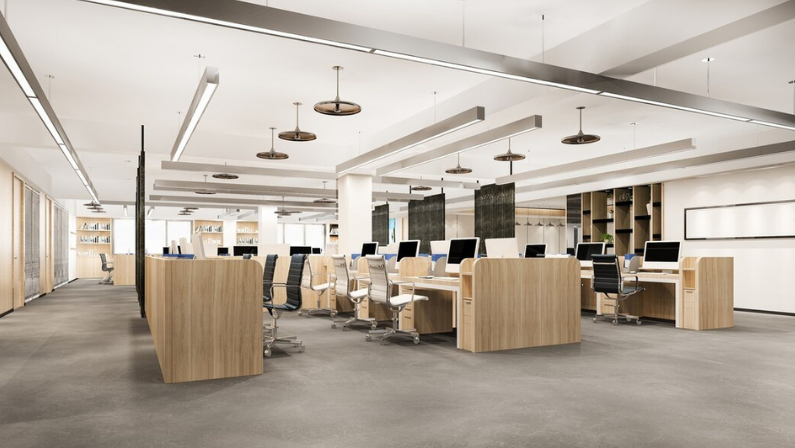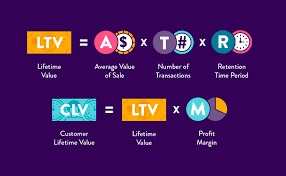Light is one of the most underestimated aspects of good office design yet one factoring prominently into shifting employee productivity, mood, and general well-being. The right lighting scenario alleviates eye fatigue and headache while stimulating energy and comfort in the working capacity. This focused guide will provide some practical office lighting hints that can appropriately mold your work environment into an easy-going and productive one.
Understanding the Importance of Proper Office Lighting
The lighting in your office does not just affect visibility but also has yet another unwanted effect. Studies say that good lights can improve productivity by almost 20 % and even reduce absenteeism. On the other hand, the poor lighting leads to strains on the eye associated with headaches, fatigue, and even workplace accidents.
Our body, by its nature, is adapted to different light forms as a day passes. Lightened up by the sun, the natural daylight balances our internal clock, determining when we need to be alert, how we feel, and how we sleep. With such understanding of these biological responses, an optimal lighting environment can be created.
The Health Impact of Office Lighting
Office lighting is beyond a tool of vision; it has various health effects further down the road:
- Vision health: Either a lower light level or too-bright light forces the eyes to work overtime and may generate symptoms of digital eye strain and cause potential long-range vision problems.
- Mental wellbeing: Studies have shown correlations between poor lighting and depressions or mood disorders, especially in areas with insufficient outdoor light.
- Physical Comfort: Improper light causes headaches, neck pain, and all sorts of physical discomfort from straining the eye unconsciously.
- Sleep quality: Late working hours in bright light and blue light ambience can provide disturbances in sleep patterns through inhibition of melatonin release.
The Business Case for Quality Lighting
Beyond employee health, there are compelling business reasons to invest in proper office lighting:
- Reduced errors and improved accuracy in tasks
- Enhanced employee morale and job satisfaction
- Lower energy costs through efficient lighting solutions
- Decreased absenteeism related to headaches and eye strain
- Improved company image for clients and potential employees
Types of Office Lighting and Their Applications
The design of an effective lighting scheme, taking into account how different lights will work with each other, requires the study of the interaction of various levels of lighting with each other. Mainly, a well-designed office is layered by the interplay of different types of lighting, with each type serving its unique purpose.
Ambient Lighting
Ambient lighting provides overall illumination for a space. It’s the foundation of your lighting scheme and ensures people can move around safely.
In offices, ambient lighting commonly comes from:
- Ceiling-mounted fixtures
- Recessed lighting
- Indirect lighting that bounces off ceilings or walls
- Pendant lights in open spaces
The ideal ambient lighting should provide even illumination without creating harsh shadows or glare. The recommended light level for general office spaces is around 300-500 lux.
Task Lighting
Task lighting focuses light on specific work areas where detailed tasks are performed. This type of lighting is crucial for reducing eye strain and improving accuracy.
Effective task lighting options include:
- Adjustable desk lamps
- Under-cabinet lights
- Articulated arm lamps that can be positioned as needed
- Monitor lights that reduce contrast between screens and surroundings
Depending upon detail involved with the task, task lighting shall provide an intensity between 500 and 800 lux. These task lights should be placed in such a manner that they shall not cause any reflections and glares onto the computer screens.
Accent Lighting
While often considered more decorative, accent lighting can play an important role in creating a balanced office environment. It can highlight architectural features, artwork, or company achievements, adding visual interest and reducing the institutional feel of many offices.
Common accent lighting includes:
- Wall washers
- Track lighting
- Recessed adjustable fixtures
- LED strips
Natural Lighting
Natural daylight is the most beneficial type of office lighting; it provides full-spectrum light that helps in regulating circadian rhythms and has been associated with pleasant moods and enhanced productivity.
To maximize natural light:
- Arrange workstations perpendicular to windows when possible
- Use light-colored, reflective surfaces to bounce daylight deeper into the space
- Install light shelves or reflective blinds that direct sunlight toward the ceiling
- Consider skylights or light tubes for interior spaces
Optimal Lighting for Different Office Areas
Workplace zones serve different purposes and thus require different lighting. By making the lighting function attuned to each area, comfort and functionality can be maximized.
Reception and Entrance Areas
The reception area creates the first impression of your business and should be welcoming while reflecting your company’s brand.
Lighting recommendations:
- Slightly higher light levels (500-750 lux) to create a sense of energy and welcome
- A combination of ambient lighting with decorative fixtures that reinforce brand identity
- Accent lighting to highlight company logos, awards, or artwork
- Consider color temperature around 3500K for a balance of warmth and professionalism
Open Office Workspaces
Customized lighting design to cater for various tasks and preferences is essential in open office spaces while at the same time minimizes computer screen glare.
Lighting recommendations:
- Ambient lighting at 300-500 lux
- Indirect lighting that reduces glare on screens
- Individual task lighting that employees can adjust
- Zoned lighting controls that can be adjusted for different areas
- Light fixtures with low unified glare rating (UGR)
Conference and Meeting Rooms
Medium-diffused lighting is appropriate for formal meetings to give that attractive atmosphere necessary for the gathering of like-minded people.
Lighting recommendations:
- Dimmable lighting systems that can adjust for different activities
- Lighting zones that allow the presentation area to be darkened while keeping note-taking areas lit
- Wall washing to create a sense of spaciousness
- Consider lighting positions that avoid glare on screens or in video calls
- Light levels from 300-500 lux, adjustable as needed
Private Offices and Focus Rooms
Offices must be lit in such a way that it supports focused work and also allows an informal meeting environment to be created.
Lighting recommendations:
- User-controllable task and ambient lighting
- Light positioning that minimizes screen glare
- Consideration of natural light access and window treatments
- Light levels of 300-500 lux for ambient lighting, with additional task lighting as needed
Break Rooms and Social Spaces
Break areas benefit from lighting that differentiates them from work areas and creates a relaxing atmosphere.
Lighting recommendations:
- Slightly warmer color temperatures (2700-3000K) to create a more residential feel
- Varied lighting fixtures that create visual interest
- Lower light levels (200-300 lux) to encourage relaxation
- Consider decorative fixtures that reinforce the casual nature of the space
Selecting the Right Light Fixtures and Bulbs
Buying the right fixtures and bulbs becomes tremendously important since the quality of light in your office heavily depends on them. Faced with modern technology, there are more choices than ever.
Modern Lighting Technologies
LED Lighting
LED (Light Emitting Diode) technology has revolutionized office lighting with benefits including:
- Energy efficiency (using up to 75% less energy than incandescent lighting)
- Long lifespan (25,000-50,000 hours)
- Low heat emission
- Availability in various color temperatures
- Dimmable options
- Directional light capability
- Instant-on without warm-up time
Premium Lighting Solutions Available in Edmonton
Order modern lights from Edmonton’s top lighting shops to ensure your office has access to the latest innovations in lighting technology. Edmonton’s lighting specialists offer comprehensive solutions designed specifically for commercial environments, with fixtures that blend functionality with contemporary design.
Edmonton-based lighting professionals have specific knowledge in the understanding of lighting needs for Alberta businesses including little things such as daylight seasonal variations which would affect an organization’s needs for lighting. They can also help you select appropriate fixtures that harmonize form and function-without failing the needed Canadian electrical code.
Partnering with one of Edmonton’s lighting retailers will assure you their expertise for any commercial installation, service after the sale, and warranties to protect your investment. Many offer design consultations to create a cohesive lighting plan that improves your particular workplace.
Color Temperature Considerations
Color temperature, measured in Kelvins (K), significantly affects the mood and function of a space:
- 2700-3000K (Warm white): Creates a welcoming, relaxed atmosphere. Best for break rooms, lobbies, and areas where a comfortable feeling is desired.
- 3500-4000K (Neutral white): Provides a balanced, focused light. Ideal for general office work, conference rooms, and collaborative spaces.
- 5000-6500K (Cool white/daylight): Mimics natural daylight and increases alertness. Appropriate for detailed tasks, design work, and areas where high concentration is required.
For most office applications, neutral white (3500-4000K) provides the best balance between comfort and functionality.
Color Rendering Index (CRI)
Renderability of colors is measured against natural light in accordance with the Color Rendering Index. In office environments:
- A CRI of 80+ is acceptable for general office use
- A CRI of 90+ is recommended for design work, quality control, or color-critical tasks
- Higher CRI lighting helps reduce eye strain and creates a more natural-feeling environment
Smart Lighting Systems and Controls
Modern office lighting should be fitted with intelligent controls to enhance user experience and energy efficiency. These days, smart lighting systems represent one of the largest leaps in workplace technology.
Lighting Automation Options
Today’s offices benefit from various automation technologies:
- Occupancy sensors: Automatically turn lights on when people enter a space and off after they leave
- Daylight harvesting systems: Adjust artificial lighting based on available natural light
- Time-based controls: Schedule lighting changes based on time of day or workweek patterns
- Task tuning: Set maximum light levels based on the needs of specific areas, avoiding over-lighting
- Integration with building management systems: Coordinate lighting with HVAC and other building systems
Personalized Lighting Control
Giving employees control over their lighting improves satisfaction and productivity:
- Desk lamps with adjustable brightness and color temperature
- App-based control systems that allow individual adjustment of overhead lighting zones
- Preset options that can be activated based on activities (focus work, collaboration, presentation)
- Remember that personal control should be balanced with energy management and overall lighting design
Addressing Common Office Lighting Problems
Even with careful planning, offices often encounter lighting challenges. Here are solutions to common issues:
Reducing Glare and Eye Strain
Glare creates visual discomfort and reduces productivity. To minimize it:
- Position monitors perpendicular to windows, not facing or backing them
- Use blinds or shades to control direct sunlight
- Select fixtures with appropriate shielding or diffusers
- Consider indirect lighting that bounces light off ceilings or walls
- Use matte finishes on work surfaces to reduce reflections
- Provide monitor hoods or anti-glare screens where needed
Eliminating Shadows and Dark Spots
Uneven lighting creates visual fatigue as eyes constantly adjust between light and dark areas:
- Layer lighting from multiple sources rather than relying on a single type
- Position task lighting to complement overhead lighting
- Consider wall or corner lighting to brighten peripheral areas
- Use light-colored surfaces to reflect and distribute light
- Conduct a lighting audit to identify and address problem areas
Addressing Flicker and Noise
Low-quality lighting can cause imperceptible flicker that contributes to headaches and eye strain:
- Invest in high-frequency electronic ballasts for fluorescent lighting
- Choose quality LED drivers from reputable manufacturers
- Be aware that dimming can sometimes introduce flicker in LED systems
- Select fixtures rated for low noise, particularly in quiet environments
Energy Efficiency and Sustainability
Energy-efficient lighting is a reliable solution for cutting down on running costs and achieving sustainability targets – which has further been facilitated by modern solutions.
Energy-Saving Strategies
Implementing these strategies can significantly reduce lighting energy consumption:
- Replace older technologies with LED lighting
- Install occupancy sensors in all appropriate areas
- Use daylight harvesting systems near windows
- Implement task lighting to reduce the need for high ambient light levels
- Consider lighting control systems that optimize energy use
- Set appropriate light levels for each area, avoiding over-lighting
- Establish scheduling that reduces lighting during non-working hours
Lighting Certifications and Standards
When selecting lighting systems, look for these certifications and standards:
- ENERGY STAR: Identifies energy-efficient products
- DesignLights Consortium (DLC): Qualifies commercial LED products that meet performance criteria
- LEED: Includes lighting requirements for green building certification
- WELL Building Standard: Addresses lighting quality for human health
- Title 24: California’s energy efficiency standards, often used as a benchmark
Implementing a Lighting Upgrade
Upgrading office lighting requires careful planning and execution to achieve optimal results.
Assessment and Planning
Before making changes:
- Conduct a lighting audit to evaluate current conditions
- Identify problematic areas and specific needs
- Consider surveying employees about lighting preferences and issues
- Calculate potential energy savings to establish a budget justification
- Determine whether retrofits or full replacement makes more sense
- Plan for minimal disruption to ongoing operations
Working with Lighting Professionals
For best results, consider working with:
- Lighting designers who specialize in commercial environments
- Electrical contractors with experience in office lighting systems
- Energy consultants who can identify incentive programs
- Manufacturers who offer layout and specification services
Maintenance Considerations
A good lighting system requires ongoing maintenance:
- Establish regular cleaning schedules for fixtures and diffusers
- Plan for lamp replacement before failure (especially in critical areas)
- Consider maintenance access when selecting and positioning fixtures
- Document system components and controls for future reference
- Train facility staff on proper maintenance procedures
Conclusion
Office lighting profoundly impacts both employee wellbeing and business performance. Taking a thoughtful approach to lighting design—incorporating appropriate technologies, controlling systems, and regular maintenance—creates an environment where people can work comfortably and productively.
The best lighting systems balance energy efficiency with human factors, creating spaces that support various activities while adapting to individual needs and preferences. With today’s technologies, it’s possible to create lighting that’s both functional and pleasant, contributing to a positive workplace experience with Dhillon Lighting.
By implementing the strategies outlined in this guide, you can transform your office lighting from a basic utility to a strategic asset that supports your business goals and workforce wellbeing.



